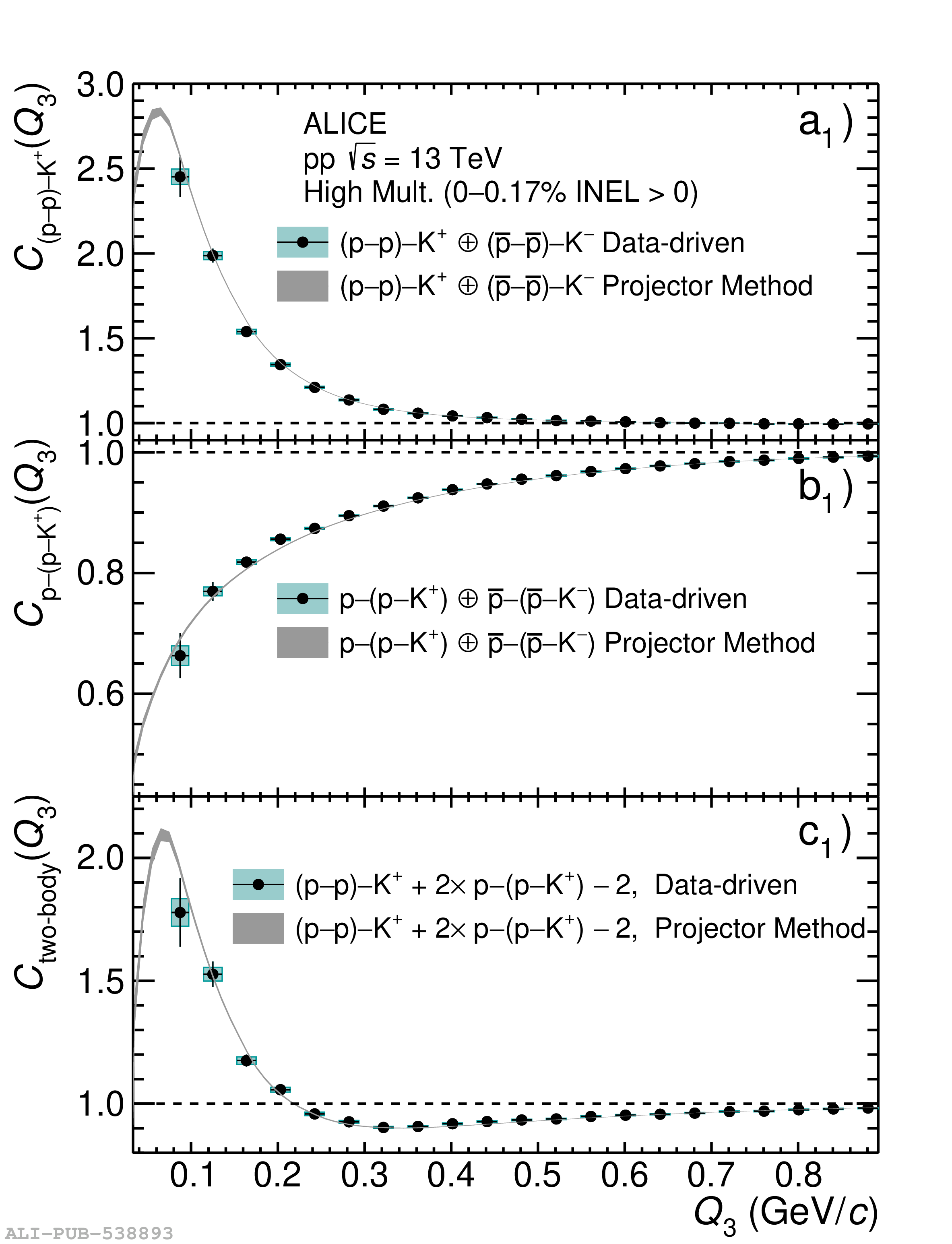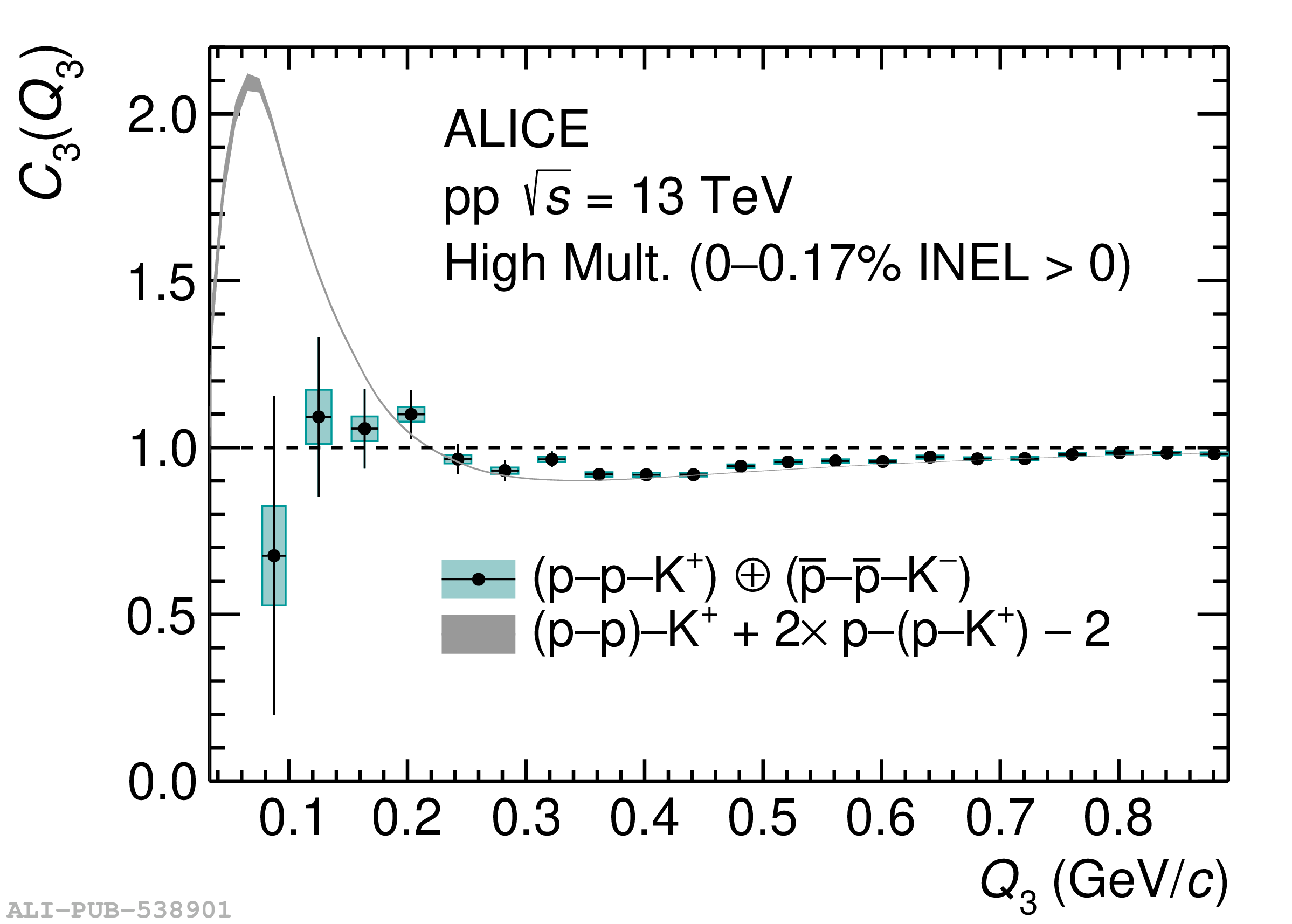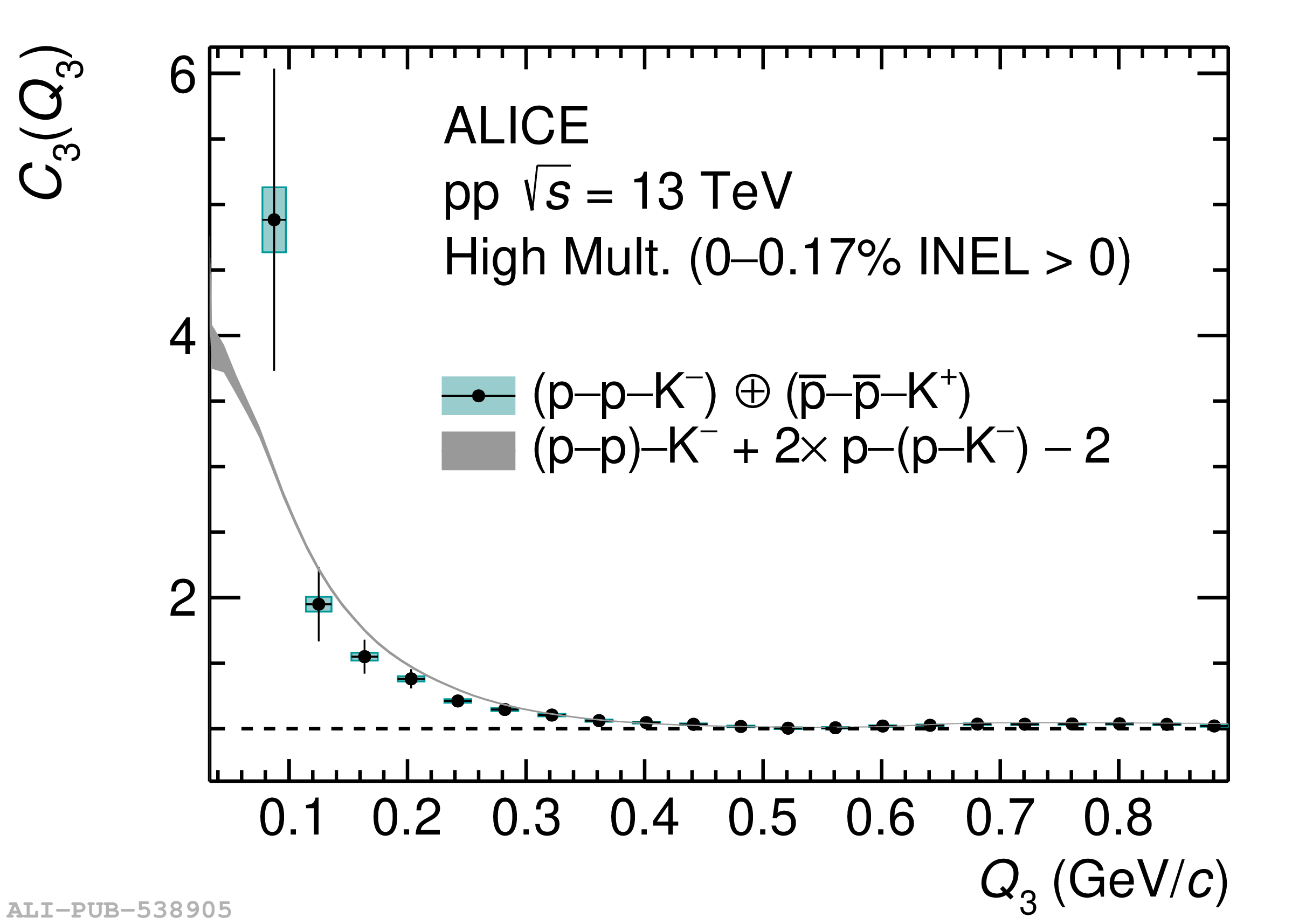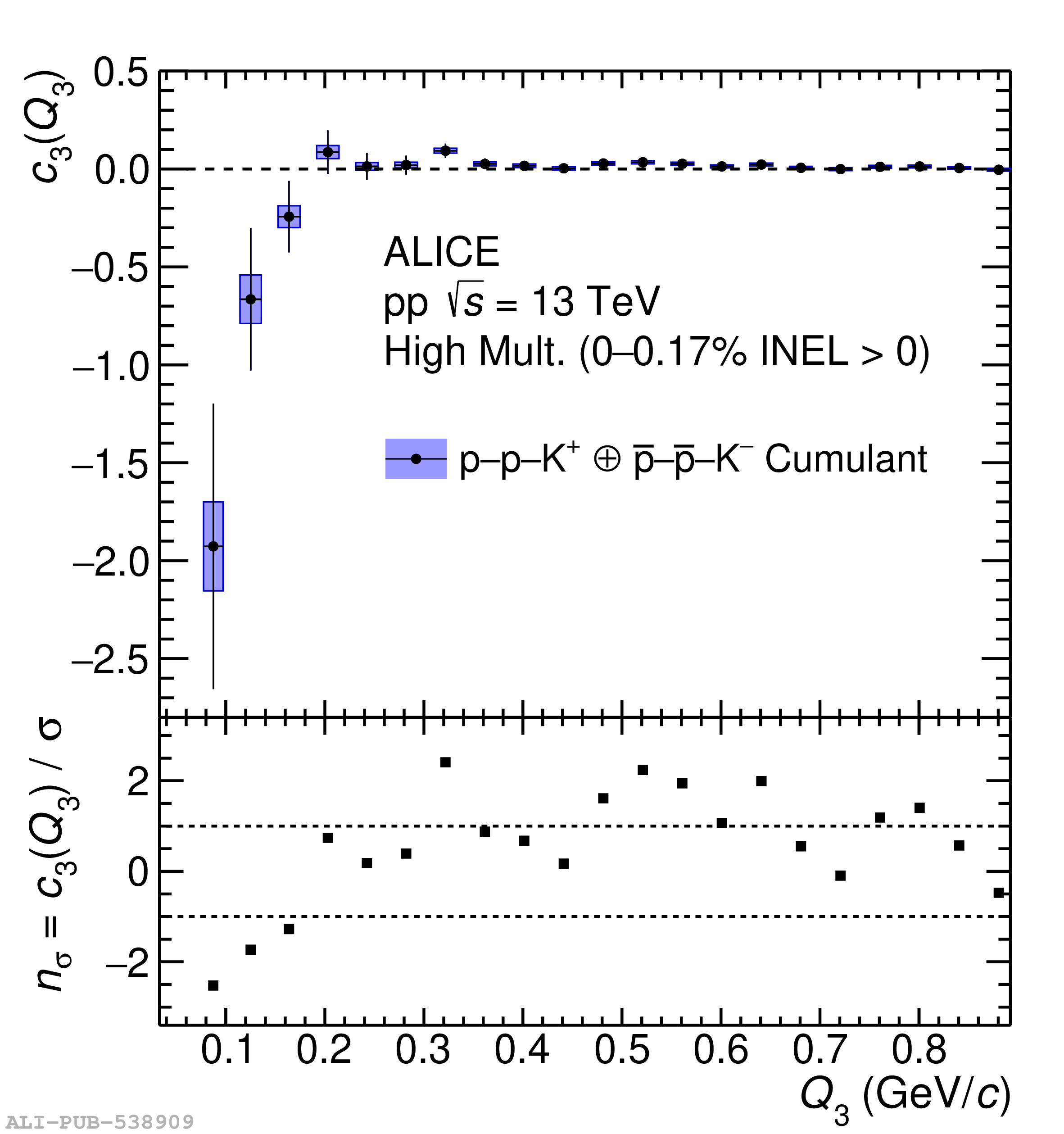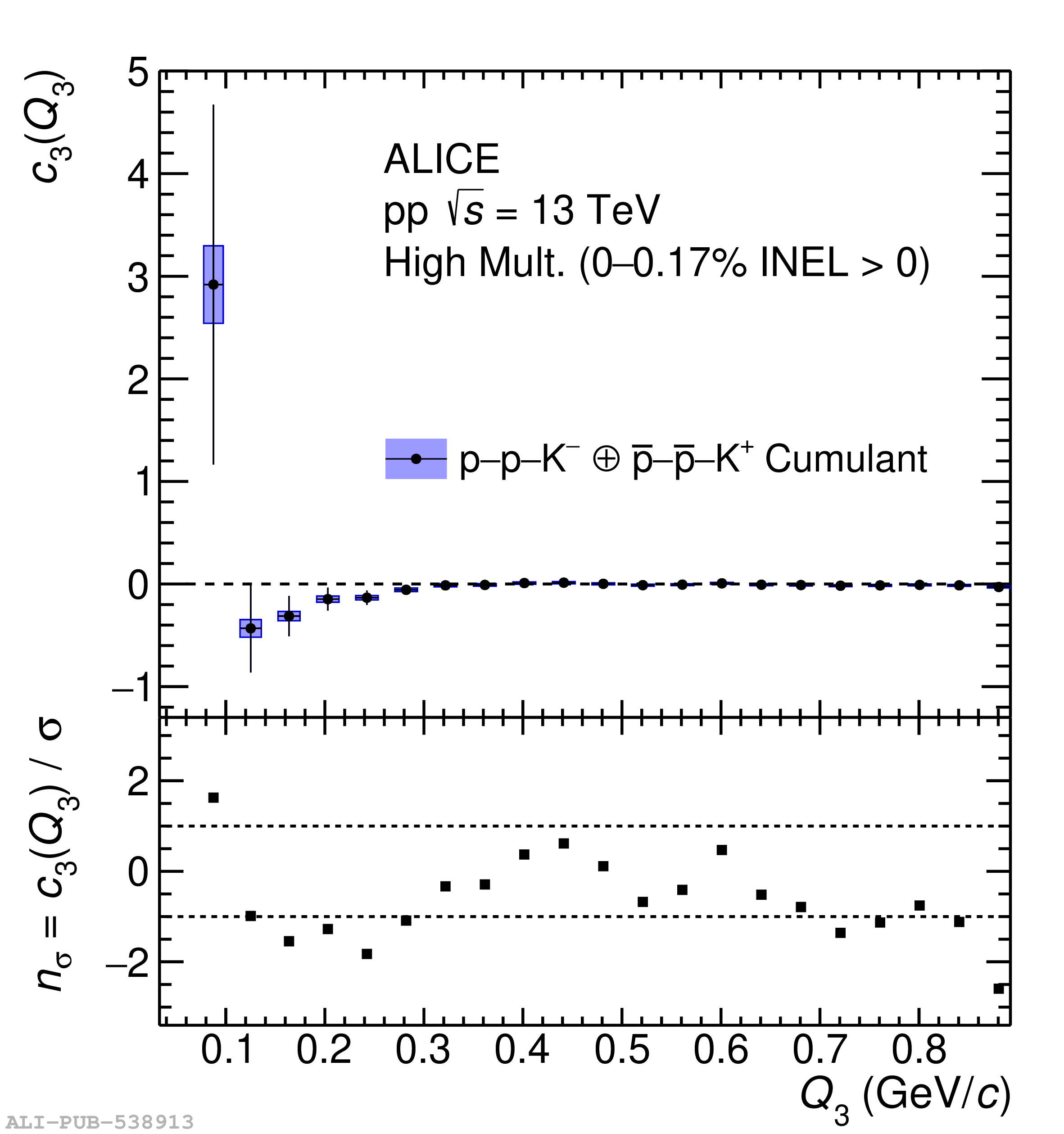The interactions of kaons (K) and antikaons ($\mathrm{\overline{K}}$) with few nucleons (N) were studied so far using kaonic atom data and measurements of kaon production and interaction yields in nuclei. Some details of the three-body KNN and $\mathrm{\overline{K}}$NN dynamics are still not well understood, mainly due to the overlap with multi-nucleon interactions in nuclei. An alternative method to probe the dynamics of three-body systems with kaons is to study the final state interaction within triplet of particles emitted in pp collisions at the Large Hadron Collider, which are free from effects due to the presence of bound nucleons. This Letter reports the first femtoscopic study of p$-$p$-$K$^+$ and p$-$p$-$K$^-$ correlations measured in high-multiplicity pp collisions at $\sqrt{s}$ = 13 TeV by the ALICE Collaboration. The analysis shows that the measured p$-$p$-$K$^+$ and p$-$p$-$K$^-$ correlation functions can be interpreted in terms of pairwise interactions in the triplets, indicating that the dynamics of such systems is dominated by the two-body interactions without significant contributions from three-body effects or bound states.
Eur. Phys. J. A (2023) 59:298
HEP Data
e-Print: arXiv:2303.13448 | PDF | inSPIRE
CERN-EP-2023-051
Figure group

